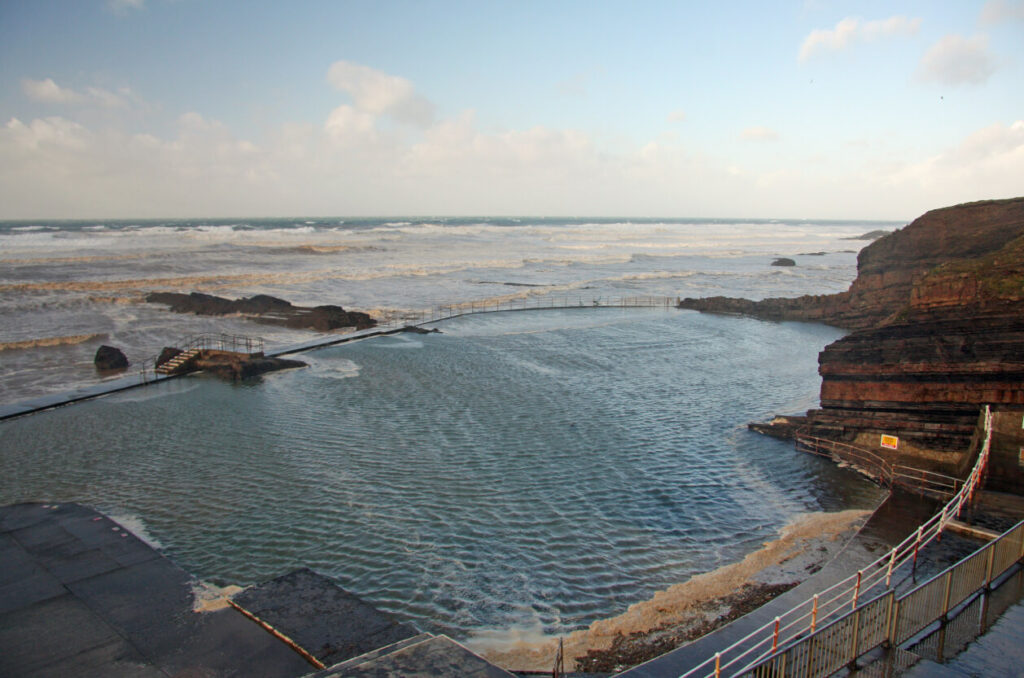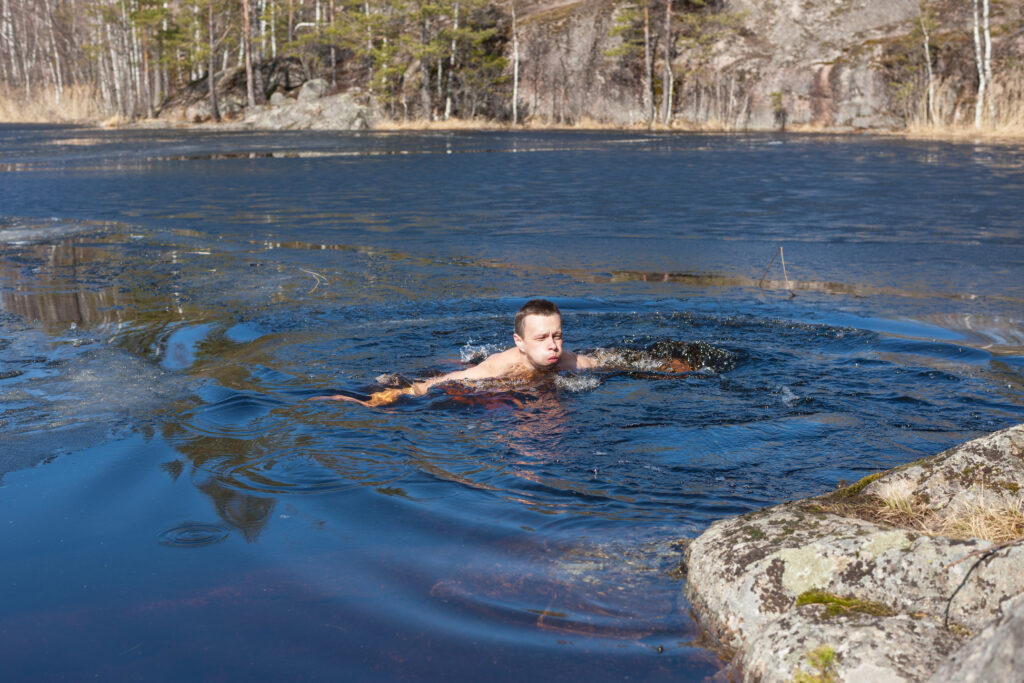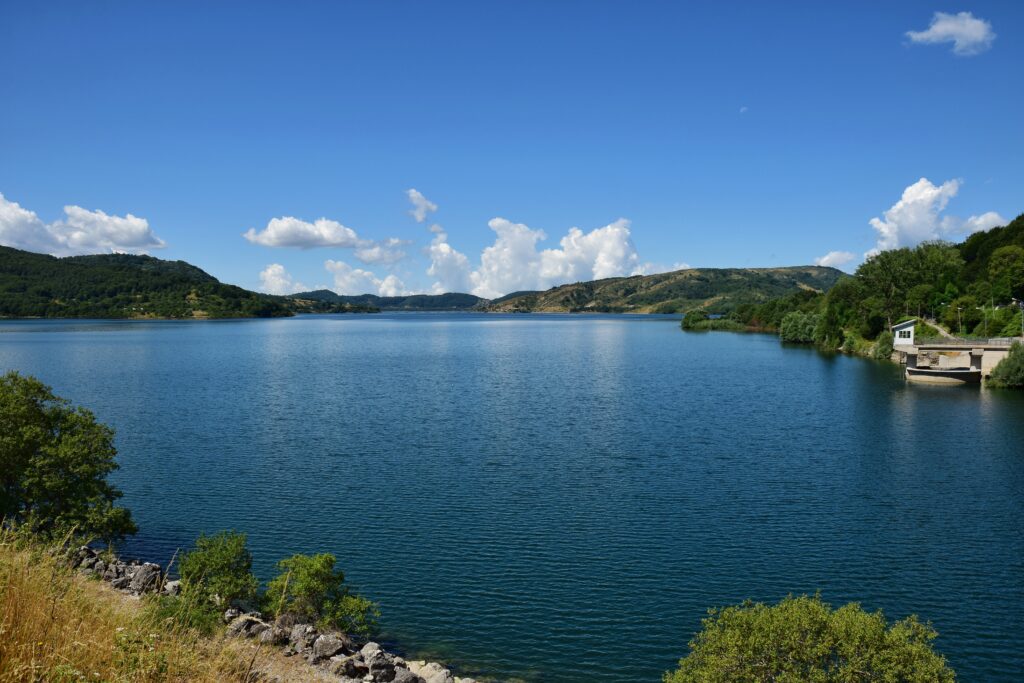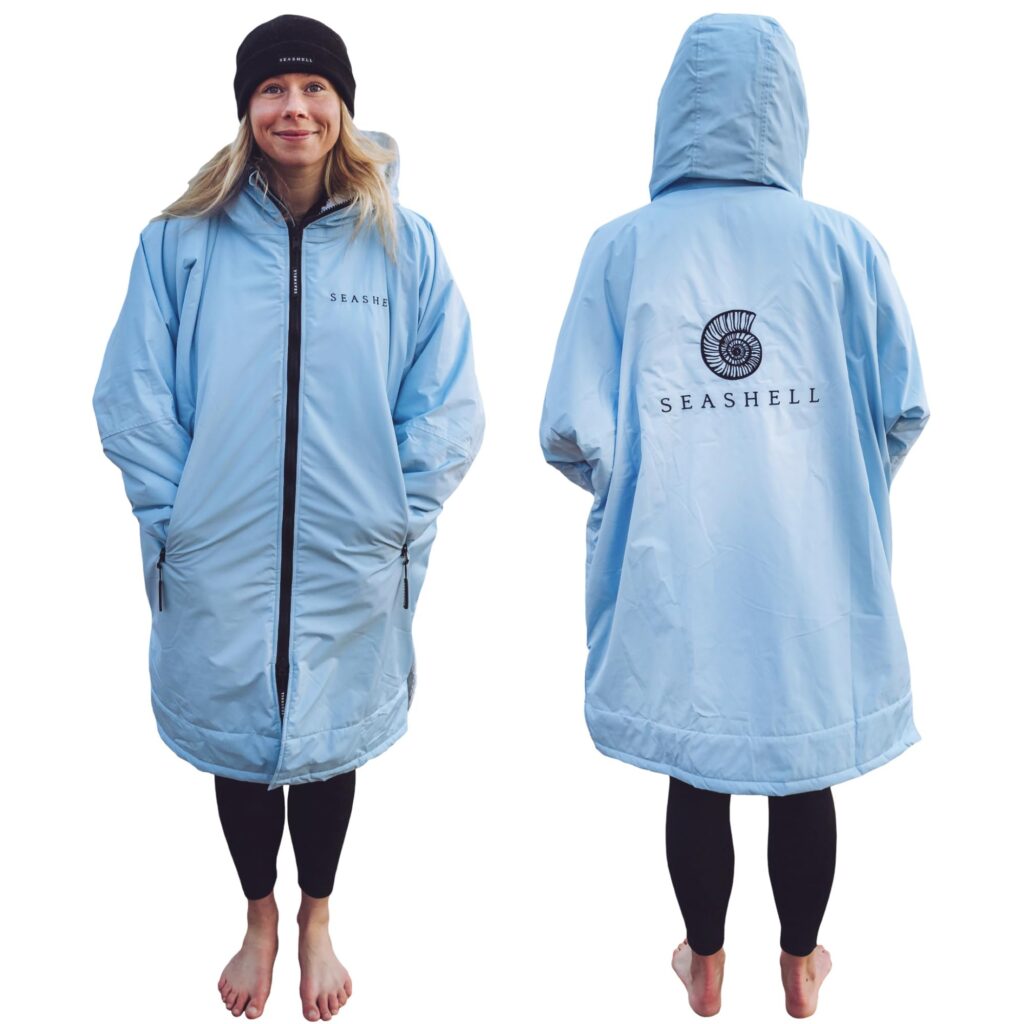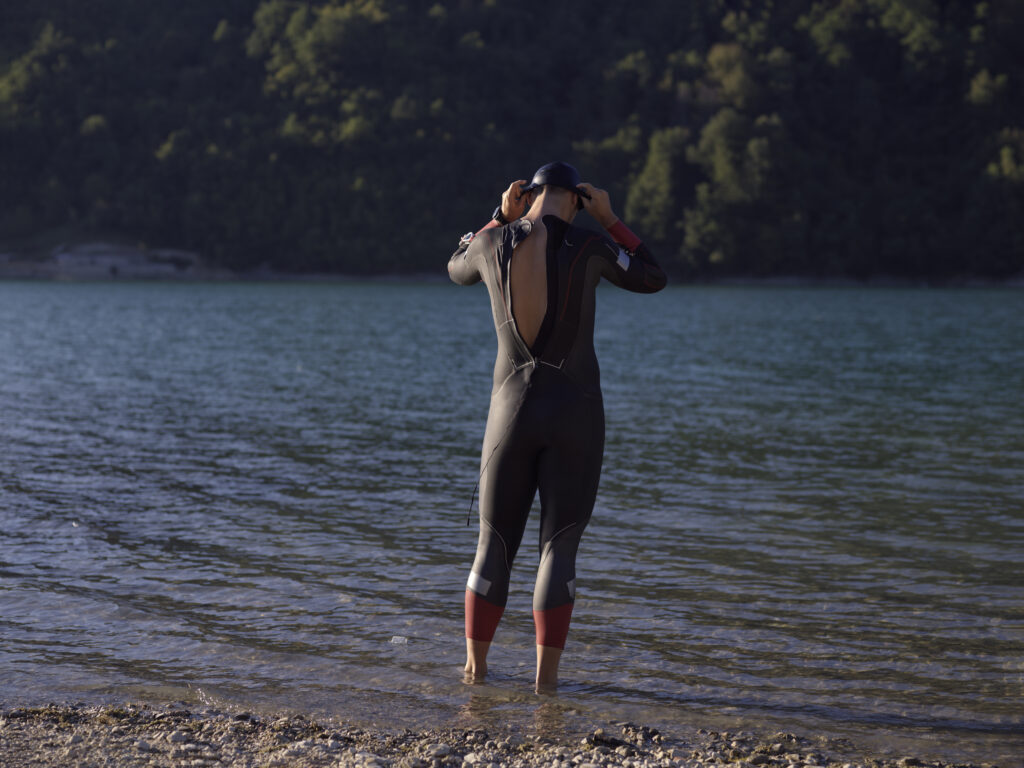Dreaming of a refreshing dip in the British sea? Timing is everything when it comes to sea swimming in the UK. While brave souls swim year-round, most of us prefer warmer waters before taking the plunge. The sea around the UK typically begins to warm up in late May and early June, but doesn’t reach its most comfortable temperatures until late August and early September, when the accumulated summer heat has had time to penetrate the water.
This delay between peak air and sea temperatures happens because water takes longer to warm up than air. Even in midsummer, UK sea temperatures vary significantly by location. Southern and western coasts generally offer warmer swimming conditions than the North Sea. For example, Cornwall and Devon often enjoy sea temperatures of 15-20°C during summer months, while more northern waters remain cooler.
The warming pattern also affects the swimming season’s length. In the southeast of England, the sea is usually warm enough for comfortable swimming for about three months – from July through September. However, with a good wetsuit and proper preparation, you can extend your sea swimming season considerably beyond these peak months.
Key Takeaways
- UK sea temperatures peak in late August and early September, reaching 15-20°C in southern regions for optimal wild swimming conditions.
- Water warms more slowly than air, creating a delay between the hottest summer days and the warmest sea temperatures for open water swimming.
- Southern and western coastal areas offer warmer and longer sea swimming seasons than northern regions of the UK.
Understanding Water Temperatures in the UK
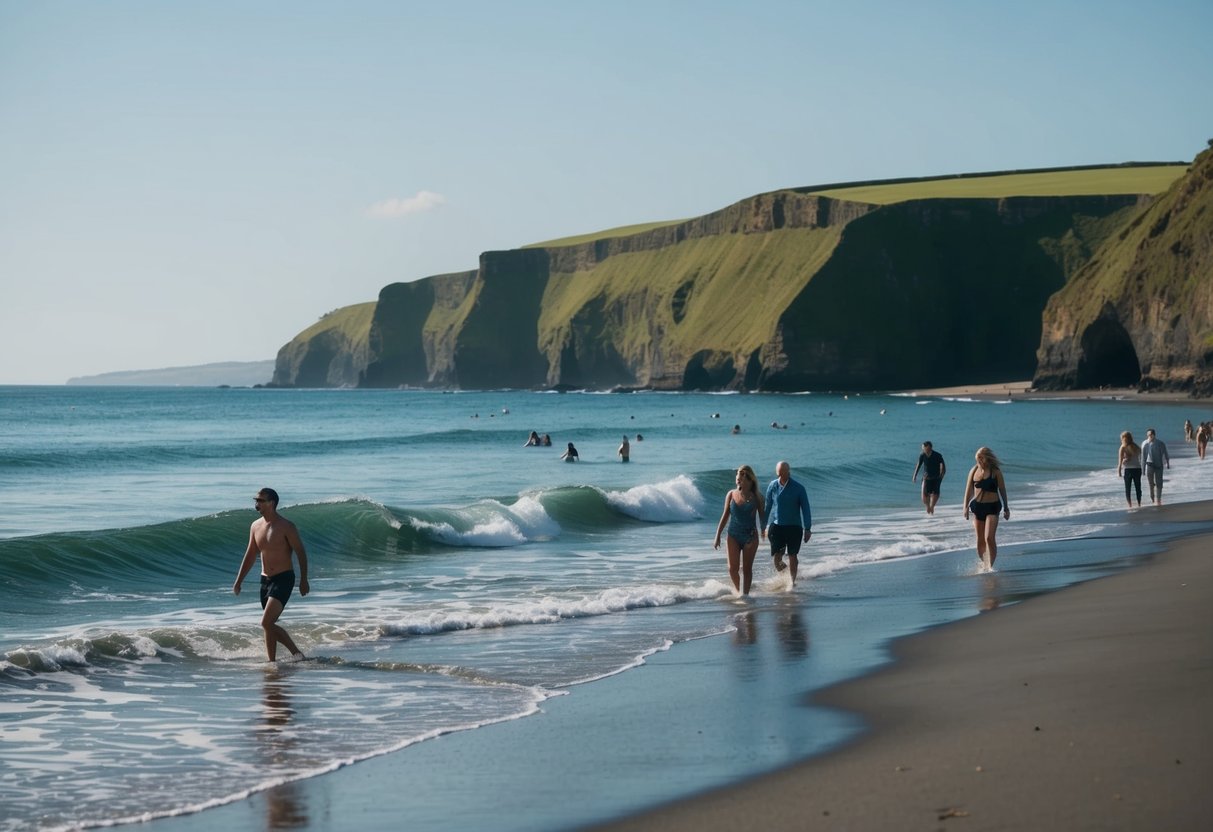
UK sea temperatures follow predictable patterns throughout the year with notable differences between coastal regions. The water temperature affects both comfort and safety for swimmers, making it essential to understand these patterns.
Seasonal Fluctuations
UK sea temperatures show a clear seasonal pattern but don’t perfectly align with air temperatures. The coldest sea temperatures typically occur in March and April rather than during winter months due to a phenomenon called seasonal lag. This happens because water retains heat longer than air.
Sea temperatures begin warming in late spring but reach their peak in late August and early September. This is when accumulated summer heat reaches its maximum effect on the water.
For comfortable swimming without a wetsuit, most people prefer water temperatures between 18°C and 26°C. UK waters typically reach these temperatures only in the height of summer.
Proper acclimatisation is crucial when swimming in cooler waters. Gradual exposure helps the body adjust to colder temperatures and extends comfortable swimming time.
Regional Variations
UK coastal waters show significant temperature differences based on location. Southern regions generally experience warmer sea temperatures than northern areas throughout the year.
The North Sea tends to warm up more slowly in spring compared to the Irish Sea and English Channel. Cornwall and Devon often enjoy slightly warmer waters due to the influence of the Gulf Stream.
UK inland waters show more extreme temperature variations than coastal waters, ranging from near zero in winter to mid-20s°C in summer. Lakes and rivers respond more quickly to air temperature changes than the sea.
Sheltered bays and coves typically warm faster than exposed coastlines. This makes them popular choices for early season swimming when main beaches might still feel too cold.
Local conditions like rainfall, currents, and depth significantly impact regional water temperatures. Checking local water temperature reports before swimming is always advisable.
Safety Considerations for Sea Swimming

Swimming in UK waters requires awareness of specific hazards that change with seasons. The sea presents unique challenges that every swimmer should prepare for to enjoy a safe experience.
Recognising Cold Water Shock
Cold water shock is a serious risk when swimming in UK seas, particularly before they warm up in late summer. When the body suddenly enters cold water, it can trigger an involuntary gasp reflex, rapid breathing, and increased heart rate. These reactions can lead to panic and potential drowning.
To reduce this risk:
- Enter the water gradually to allow your body to acclimatise
- Spend only short periods in cold water during spring and early summer
- Consider wearing a wetsuit when sea temperatures are below 15°C
- Never jump or dive into cold water
UK sea temperatures typically range from 6-10°C in winter to 15-20°C in summer, with March being particularly cold after winter cooling.
Negotiating Rip Currents
Rip currents are powerful, narrow channels of water flowing away from shore that can quickly pull swimmers out to sea. They occur at any beach with breaking waves and can be difficult to spot for inexperienced swimmers.
If caught in a rip current:
- Stay calm and conserve energy
- Never swim against the current
- Swim parallel to the shore until free of the current
- Signal for help by raising an arm if you cannot escape
Look for tell-tale signs of rips including:
- Darker patches of water between waves
- Less breaking waves in a channel
- Debris moving steadily seaward
Always swim at lifeguarded beaches where possible and pay attention to safety flags.
Tide Times and Tide Tables
Understanding tides is crucial for safe sea swimming in the UK. Tides can change water depth rapidly, create strong currents, and potentially cut off exit points.
Before swimming:
- Check local tide times and tide tables online or via mobile apps
- Plan your swim during ‘slack’ tide (the hour before and after high or low tide) when currents are weaker
- Be aware of spring tides which create more extreme high and low water levels
Never swim alone, and always inform someone of your swimming location and expected return time. Local knowledge is invaluable, so speak with locals or coastguard services if unfamiliar with an area.
The Importance of Visibility
Good visibility ensures you can be seen by others and can navigate safely while swimming. Poor visibility increases risk substantially in the sea.
Key visibility considerations include:
- Wear a brightly coloured swim cap (orange or pink are excellent choices)
- Use a high-visibility tow float which also provides emergency buoyancy
- Avoid swimming at dawn, dusk or night unless properly equipped and experienced
- Check weather forecasts for fog, mist or heavy rain which reduce visibility
In busy areas with boat traffic, swim close to shore in designated swimming areas. Be cautious of changing weather conditions which can reduce visibility quickly.
If in difficulty, float on your back and call for help. The coastguard can be contacted in emergencies by calling 999 or 112 in the UK.
The Best Times to Swim in the UK

The UK sea temperatures follow a predictable pattern, with specific months offering the most comfortable swimming conditions. Weather forecasts play a crucial role in planning your sea swimming adventures, helping you choose both the optimal season and the best days.
Ideal Months for Warmer Seas
The UK’s sea temperatures reach their peak in late August and early September. This timing reflects the accumulated heat from summer sunshine finally warming the waters to their highest temperatures. While July often feels like peak summer, the seas continue warming through August, making late summer ideal for swimming.
September offers a particularly pleasant experience as the water is still warm in early Autumn. Many experienced sea swimmers prefer this month as beaches become less crowded after the school holidays end.
The average sea temperature in British waters ranges from 15-20°C in summer, depending on location and yearly variations. Coastal areas in southern England typically offer the warmest conditions, while Scotland’s waters remain cooler.
Daily and Weekly Weather Forecasts
Checking the weather forecast before sea swimming is essential, even during warm months. Wind conditions significantly impact sea temperature and swimming comfort. Strong offshore winds can push warmer surface water away from the coast, replacing it with colder deep water.
The best days for sea swimming feature:
- Light winds (under 10 mph)
- Sunny conditions for several previous days
- Low rainfall (which can lower coastal water temperatures)
- Morning swims during hot spells when the sea has warmed overnight
Many sea swimmers use specialist marine forecasts rather than general weather apps. These provide detailed information about water temperatures, tide times, and wave heights. Apps and websites dedicated to wild swimming often include water temperature readings from recent swimmers.
Preparing for Open Water Swimming
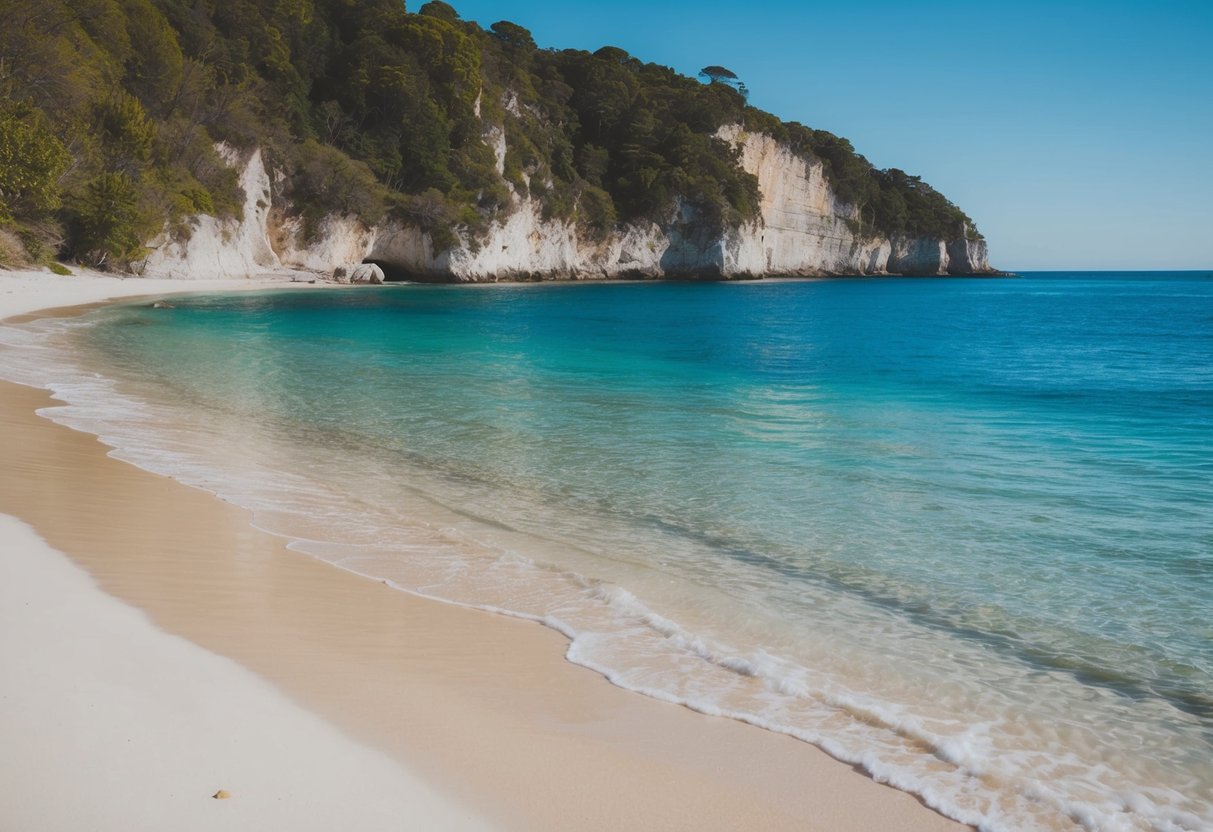
Swimming in UK waters requires proper preparation to ensure safety and enjoyment. The right equipment and gradual adaptation to cold temperatures are essential for a positive experience.
Acclimatising to Cold Water
Cold water immersion can be shocking to the body, especially when sea temperatures in the UK range from low single digits to high teens. Proper acclimatisation reduces the risk of cold water shock and hypothermia.
Begin with brief exposures of 2-3 minutes in shallow water. Wade in slowly, allowing water to reach your waist before submerging shoulders and head. This helps your body adjust gradually.
Control your breathing when entering cold water. Take slow, deep breaths to overcome the initial gasp reflex that occurs in temperatures below 15°C.
Increase exposure time gradually over several sessions. Your body will adapt, making each swim more comfortable than the last.
Remember that acclimatisation benefits diminish after about a week without cold water exposure, so maintain regular practice.
Choosing the Right Wetsuit
Selecting appropriate thermal protection is crucial for UK sea swimming. Water temperatures rarely exceed mid-20s even in peak summer, making wetsuits essential for most swimmers.
Wetsuit Thickness Guide:
- 5mm+ for winter swimming (below 10°C)
- 3-4mm for spring/autumn (10-15°C)
- 2mm shorty or swimsuit for summer (16°C+)
Ensure your wetsuit fits snugly without restricting movement or breathing. Arms should extend fully without pulling across the shoulders. A proper fit minimises water ingress while maintaining flexibility.
Consider additional neoprene accessories for extremities: gloves, boots and a swim cap provide extra warmth for head, hands and feet, which lose heat rapidly in cold water.
SwimTrek’s wetsuit guide can offer more detailed information about matching wetsuit thickness to specific water temperatures.
Cold Water Dips and Gradual Exposure
Cold water dipping serves as excellent preparation for sea swimming. This technique involves brief, controlled exposure to cold water to build tolerance safely.
Start with 30-second dips in cold water during warmer months. This trains your body’s cold shock response in controlled conditions. Slowly increase duration as comfort improves.
Use a shower method at home: finish normal showers with 30 seconds of cold water, gradually extending this time. This helps condition your body’s response to temperature drops.
Track water temperatures before swimming. The warmest sea temperatures typically occur in late August and early September, making this an ideal period for beginners.
Never swim alone during cold water training. A partner can monitor for signs of hypothermia including confusion, slurred speech or excessive shivering.
Buoyancy and Tow Float Use
Safety equipment significantly reduces risks associated with open water swimming. Tow floats provide visibility and emergency buoyancy without restricting movement.
Essential Safety Equipment:
- Brightly coloured swim cap
- Tow float with storage compartment
- Whistle for emergency signalling
- Waterproof watch to track swim duration
Tow floats attach via a waist belt with a 1-2 metre cord. They create minimal drag while providing crucial visibility to boats and other water users. In emergencies, they offer buoyancy support for rest periods.
Practice using your tow float in shallow water first. Learn how it responds when you need to rest against it. Some models include dry storage for keys, phone and emergency contact information.
Natural buoyancy varies between swimmers. Those with lower body fat may benefit from additional buoyancy aids during acclimatisation period when muscles may fatigue more quickly in cold water.
Essential Gear for Sea Swimmers

Having the right equipment for sea swimming helps protect you from cold water and changing conditions. Proper gear enhances safety and comfort, especially during cooler months when UK sea temperatures are lower.
Swimming Caps and Their Benefits
A good quality swimming cap is essential for sea swimmers year-round. Caps provide thermal protection by reducing heat loss through the head, which is crucial in colder waters. Silicone caps offer better insulation than latex ones and are more durable for sea conditions.
Brightly coloured swim caps improve visibility in open water, making swimmers easier to spot by lifeguards and water users. This is particularly important in choppy seas or busier swimming areas.
Many sea swimmers use caps to keep hair dry and protected from salt water damage. For those with longer hair, a swimming cap helps keep it contained and prevents it from obstructing vision while swimming.
Protecting Yourself With Swim Caps and Hats
During colder months, neoprene swim hats provide superior thermal protection compared to standard caps. These thicker hats can significantly reduce heat loss, as humans lose up to 10% of body heat through the head.
Some sea swimmers opt for a dual-layer approach, wearing a silicone cap underneath a neoprene hat for maximum warmth. This combination works especially well for winter sea swimming when UK waters are at their coldest.
For added protection, swim caps with ear covers help prevent cold water entering the ear canal, reducing the risk of swimmer’s ear and the discomfort of cold water shock. These specialised caps are worth considering for regular sea swimmers.
After swimming, a warm woolly hat is essential kit to have ready. Putting on a dry hat immediately helps the body retain heat during the crucial post-swim recovery period.
Embracing the Wild Swimming Community
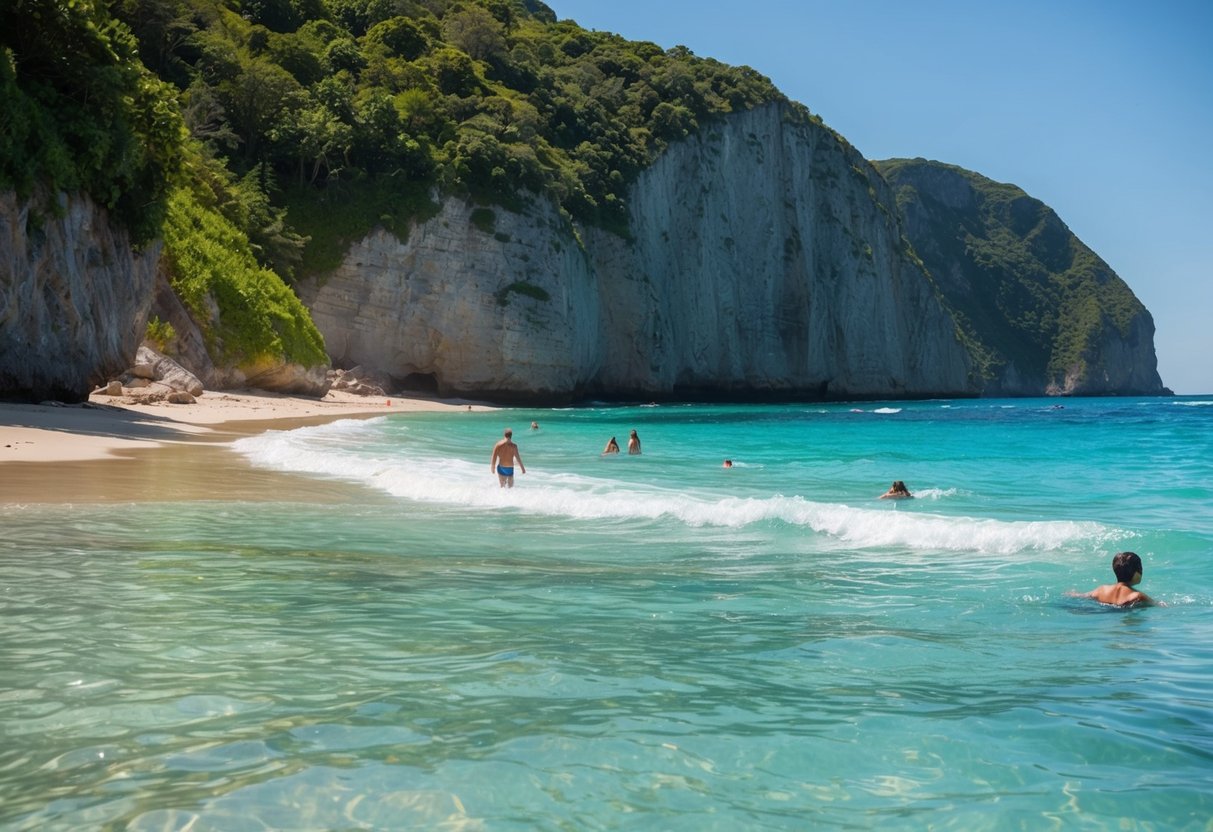
Joining the wild swimming community in the UK offers social connections and valuable local knowledge about the best times and places to swim. These networks provide crucial safety information and enhance the overall experience for newcomers.
Outdoor Swimming Societies
The Outdoor Swimming Society serves as the hub for wild swimmers across the UK, connecting thousands of enthusiasts through events and online resources. Founded in 2006, this community has grown tremendously, reflecting the rising popularity of wild swimming.
Local chapters organise regular group swims that are perfect for beginners seeking guidance and companionship. These gatherings typically occur year-round, with larger attendance during the warmer months when sea temperatures become more inviting.
Many societies offer cold water inductions and beginner sessions, making the transition to wild swimming safer and more enjoyable. They provide essential information about:
- Water temperature changes throughout the year
- Proper acclimatisation techniques
- Required safety equipment
- Seasonal swimming considerations
Locating Popular Swimming Spots
The UK boasts numerous wild swimming locations suitable for various experience levels. Coastal areas like Cornwall, Devon, and Dorset are particularly popular during late summer when sea temperatures reach their peak.
Mobile apps and websites dedicated to wild swimming help identify locations with information about water quality, amenities, and current conditions. Many sites feature user reviews and temperature logs that track seasonal warming patterns.
Tidal pools offer a gentler introduction to sea swimming, as they warm faster than open water and provide more controlled environments. These spots are ideal for early-season swimming when open seas remain quite cold.
Social media groups focused on specific regions share real-time updates about water conditions and safety considerations that can be essential for new swimmers.


